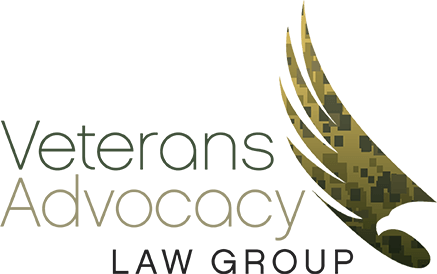Phase I and II funding agreements in the SBA’s (Small Business Administration) SBIR/STTR program have eligibility criteria a small business concern (SBC) must meet. The criteria a business must meet to be identified as an SBC is outlined in the Small Business Act (15 U.S.C. 631 et seq.). These guidelines include meeting the size standard and not being a dominant force in its industry. Additionally, the SBC must be independently operated and owned. To qualify for the programs, an SBC must be a for-profit organization and have a physical location in the U.S. Additionally, more than 50 percent of the business must be controlled and owned by one or more individuals who are either permanent resident aliens or U.S. citizens, or by other SBCs that are each more than 50 percent controlled and owned by one or more individuals who are permanent resident aliens or citizens of the U.S. Finally, the SBC and its affiliates cannot have more than 500 employees.
As per the SBIR and STTR program guidelines, federal agencies with extramural R&D budgets over $100 million must allocate 3.2 percent to fund small businesses through the SBIR program. For agencies with extramural R&D budgets over $1 billion, 0.45 percent of that budget must be set aside for the STTR program. Currently, the SBIR program has participation from eleven federal agencies, out of which five participate in the STTR program and the SBIR. The Department of Defense (DoD) is one of such five. While SBIR and STTR have three phases, the dollar amount, duration of each phase, and the procedures that an SBC must follow can vary between participating federal agencies.
Phase I
Phase I evaluates the commercial potential, feasibility, and technical merit of the SBC’s proposed R&D efforts. The quality of the SDVoSB, VoSB, or other small business awardee’s performance is also determined. As of October 2022, participating agencies are authorized to issue a Phase I award for up to $295,924 without the need for SBA’s prior approval, with the typical duration of six months for SBIR and one year for STTR.
Phase II
Following the successful completion of Phase I, Phase II continues the R&D efforts and focuses on achieving the project's proposed commercial potential and scientific and technical merit. Funding is dependent upon Phase I's results. Businesses that have acquired Phase I awards generally qualify for Phase II. As of October 2022, agencies can offer up to $1,972,828 in support without the SBA’s prior approval and for up to two years. The SBA periodically adjusts the dollar amounts for inflation.
Phase III
The SBIR/STTR programs aim for a business concern to advance to Phase III, which focuses on commercializing the technology developed during Phases I and II. It is important to note that funding for Phase III does not come from the SBIR/STTR programs but from non-SBIR/STTR funds. Depending on the agency, Phase III could involve additional R&D activities funded by non-SBIR/STTR funds or production contracts for use by the federal government. These additional contracts are for processes, products, or services resulting from the earlier phases. Unlike Phases I and II, there is no dollar limit connected with Phase III awards.
While there are similarities between the SBIR and STTR programs, there are also some significant differences. The most notable difference is that SBIR is designed for small businesses conducting independent research, while the STTR is only available to small businesses that partner with a non-profit research institution (RI). The RI must be located in the U.S., be a domestic non-profit research organization, a non-profit college/university, or a federally funded R&D center. The STTR program focuses on technology transfer from the RI to the small business and, eventually, to the open market. Therefore, while a small business concern that wins an SBIR award can cooperate with any organization, an STTR awardee must team up with a non-profit research institution.
In SBIR, the SBC that wins the award must carry out a minimum of 66 percent (two-thirds) of the Phase I work and at least 50 percent (half) of the Phase II work. On the other hand, in STTR Phases I and II, the SBC must complete a minimum of 40 percent of the work, and the non-profit RI must complete a minimum of 30 percent. The remaining work may be subcontracted out to another subcontractor or the RI.
According to the Small Business Act, Section 9 (15 U.S.C. §638), and the SBA's Policy Directive, the federal agencies participating in the SBIR/STTR programs are responsible for designing their programs. This includes determining the R&D topics of interest to their agency, identifying them in their solicitations, receiving proposals from small businesses, competitively evaluating proposals, and providing funding for the selected proposal. The Small Business Act has been reauthorized until September 30, 2025.
The programs incentivize participation by permitting SBCs to keep ownership and title rights to the computer software and/or technical data generated during an SBIR/STTR award. This ownership is crucial for the commercialization of the developed technology. Therefore, SBCs need to understand their rights in SBIR data. Although the SBC retains ownership, the federal government obtains license rights to the SBIR/STTR data to evaluate the work and use the results. However, the Government must safeguard that the SBIR/STTR data is not misused by either other entities or itself in ways that diminish the rights and economic prospects of the small business that owns the data.
A Phase III SBIR contract may necessitate the use of the SBIR data. If this occurs, the federal government can only award the contract to the small business that developed the data. Therefore, SBIR data rights are very important in Phase III.
Hence, the right to obtain a sole-source funding agreement belongs to the SBC, which owns the SBIR data needed to complete the Phase III work. The Government must award Phase III to the SBIR firm that developed the technology to the greatest extent feasible. If the agency does not award Phase III to the SBC that developed the technology, it must provide a written justification to the SBA explaining its reasoning.
Moreover, Phase III programs are not subject to SBA’s size standards. As a result, SBIR firms can expand to any size and remain eligible for Phase III awards for their technologies. Furthermore, due to this exemption, a larger business can acquire the SBIR firm and still be eligible for Phase III programs for the technologies developed by the SBIR firm.
Defense Federal Acquisition Regulation Supplement (DFARS) 252.227-7018 Rights In Noncommercial Technical Data and Computer Software – Small Business Innovation Research (SBIR) Program (MAR 2020) (Deviation 2020-O0007), is a provision utilized by the DoD that guarantees protection for SBIR/STTR data during a particular period. During this protection period, the Government is granted a royalty-free, paid-up, non-exclusive, worldwide license to use the appropriately marked SBIR/STTR data. However, the Government is not permitted to disclose it. This protection is as effective as the protection given to delivered, properly marked data developed solely at private expense. Once the protection period has ended, the DoD is granted Government Purpose Rights in the SBIR/STTR data. It is important to note that this provision applies only to noncommercial technical data and computer software.
A future SBIR/STTR data rights blog will provide more comprehensive information.


